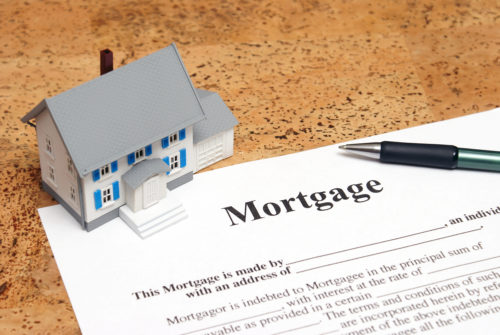When you’re shopping for a home, it’s important to begin the process knowing how much you can afford, and how much a mortgage lender will be willing to lend you. Without this information, you could be setting yourself up for disappointment, as well as a lot of wasted time and money spent looking for and trying to buy a home.
Often, when you first reach out to real estate agents for help with finding a home, they will ask whether you have been prequalified or preapproved for a mortgage. Although the differences between these terms are subtle, they are essentially the same thing: a conditional offer from the bank to lend you up to a certain amount of money for a home purchase.
Getting prequalified or preapproved for a loan is the first step in the home buying process, and although it doesn’t guarantee your mortgage application will be approved, it shows sellers that you are a serious buyer. It also gives you a chance to address issues in your credit history before they hold up the mortgage process.
Table of Contents
What Does Pre-Qualified Mean?
When you pre-qualify for a mortgage, it means you know ahead of time whether you will qualify for the loan by the lender. Pre-qualifying for a mortgage is usually a fairly simple process, in which the lender reviews information you provide about your finances, including your income, debt, and assets. Based on this data, the lender will let you know whether you qualify for a mortgage, and give you an estimate of how much you may be able to borrow.
What the pre-qualification process doesn’t do, though, is analyze your credit score or credit history. It doesn’t take into account, then, whether you have any major issues in your financial history such as bankruptcies, collection accounts, tax liens, or other negative information that could potentially prevent you from getting a mortgage. Your pre-qualification is based strictly on the information you provide, so if you leave out key details (for example, you once defaulted on a second mortgage), it’s possible you’ll get pre-qualified, only to be denied the loan in later stages.
If you have a good credit history, and provide accurate details during the pre-qualification process, the answer you receive will be a helpful guide for you during the homebuying process. The pre-qualification letter will give you a good idea about how much you can borrow, ensuring you look at properties within your budget. Going through the process can also give you the opportunity to explore different loan products and the options available, so when it does come time to apply for a loan, you can choose the one that’s best for your needs and circumstances.
Also, in some markets, a prequalification letter is a must when you want to make an offer on a home. Sellers only want to work with serious buyers, and providing proof that you’ve already talked with a lender and you qualify for a mortgage provides assurance to them that you’re committed to the process. Again, it’s not a guarantee of a loan, but it is a step in the right direction.
How to Get Pre-Qualified for a Mortgage
Getting pre-qualified for a mortgage might be one of the easiest parts of the homebuying process. Most lenders will allow you to apply online or over the phone, or you can visit the bank in person, and there is no cost for the application.
You’ll be asked to provide information about your income, assets, and debt, and to provide information that may determine whether you qualify for special programs; for example, military veterans may qualify for certain loan types, or you could be eligible for an FHA loan. There are also programs to help low-income and single parent homebuyers, and a loan officer can provide information and assistance in accessing these loans during the pre-approval process.
Keep in mind that you need to be honest and accurate, and if you know of potential issues (like a spotty credit history) mention it to the lender now. The pre-qualification is only as good as the information you provide, and inaccurate data will only mean disappointment and frustration down the road.
Depending on the lender, you may receive an answer immediately, or get a letter within a few days confirming your pre-approval and the estimated amount. The letter will also outline the conditions for the loan, including a more in-depth look at your finances, the results of appraisals and inspections, and details about down payments, interest rates, and other requirements. Once you have the letter, you can begin shopping for a home.
Remember, pre-approval only provides an estimate, and you don’t have to spend the entire amount you qualify for. When you consider taxes, insurance, and other costs of home ownership on top of the loan payments, the monthly payments could be more than you’re prepared to pay. Although there may be help if you get in over your head, you want to be sure you can afford whatever you take on.
What Does Preapproved Mean?
Although some lenders use the term prequalified interchangeably with preapproved, preapproval is actually a step beyond prequalification. Some real estate professionals and sellers actually prefer to work with buyers who are preapproved rather than prequalified, since pre-approval is slightly more set in stone than a pre-qualification.
When you are preapproved for a home loan, it means that the lender has reviewed your financial information in more depth. Rather than simply taking your word for it, the lender has reviewed documentation related to your employment, assets, tax returns, sources of income (such as alimony or investments), savings, and monthly debt payments. They have also reviewed your credit report and credit score to ensure you meet minimum qualifications, and that your debt-to-income ratio isn’t too high.
Although the preapproval process still doesn’t mean you are guaranteed a mortgage or you’ll be able to purchase a particular home, it does mean that the mortgage lender doesn’t see any immediate red flags and will most likely be willing to provide the loan.
The other major difference between prequalification and preapproval is that a preapproval letter will provide details of a specific loan amount, as well as information about your expected down payment and interest rates. Seeking preapproval for a mortgage is important if you want to “lock in” a specific interest rate. When you are pre-approved, the lender will give you a rate that will remain in effect for a predetermined period, even if rates go up while you are shopping.
If you’re pre-approved and find a home, you’ll still need to work with the bank to secure a loan commitment. During this process, you’ll need to provide inspection and appraisal reports, and meet any conditions that were set by the lender during the prequalification or preapproval process. Your credit report and finances will be reviewed again, and you may need to provide documentation of certain information. For example, if you needed to pay off collection accounts or a credit card, the bank will want documentation that this has been done.
How to Get Preapproved for a Mortgage
Getting pre-approved for a mortgage is a bit more complex than prequalifying, and you’ll need to provide more documentation. In some cases, you will need to pay an application fee as well.
Before you begin the application process, gather the documents you will need. The lender will likely provide a list of what they want to see, but at a minimum you’ll need your most recent pay stubs, a copy of your latest tax return, copies of bank statements, and asset statements. Because there is a lot of information to collect and go over, it’s often easier to make an appointment with a mortgage lender to complete the process in person.
Again, be precise and accurate with the information you provide, because if you aren’t, the pre-approval will be meaningless. It’s also a good idea to check your credit report and address any problems before applying for a mortgage. The worst time to discover a major error or other problems is when you are trying to purchase your dream home.
How Long Does a Mortgage Preapproval Last?
Typically, a mortgage pre-approval is valid for 60 to 90 days. Most lenders and real estate professionals believe that anything over three months old is no longer valid, as your financial picture could significantly change in that period.
If a pre-approval expires, it’s usually because a buyer couldn’t find the right property. Sometimes, a pre-approval is invalidated because the conditions weren’t met, but more often than not, it’s a timing issue. Therefore, wait to seek preapproval until you are serious and ready to purchase a home, so you’ll be prepared to move forward when the time comes.
Image Source: https://depositphotos.com/





